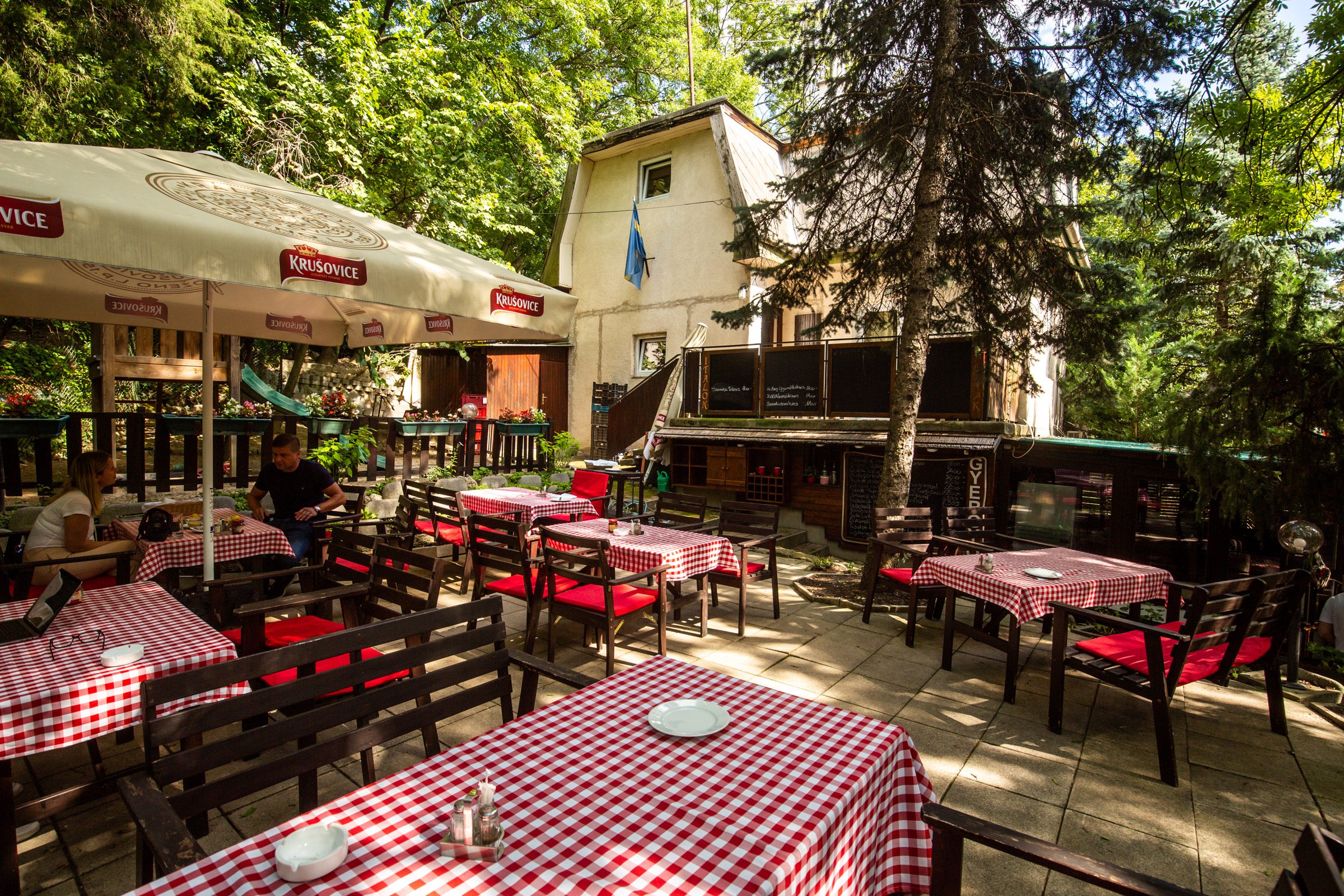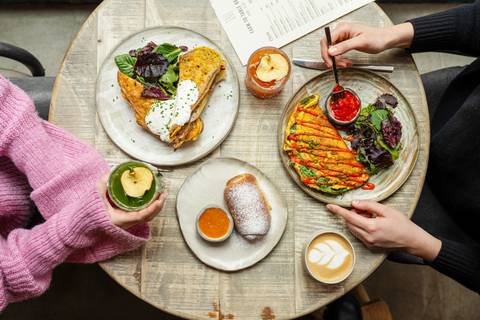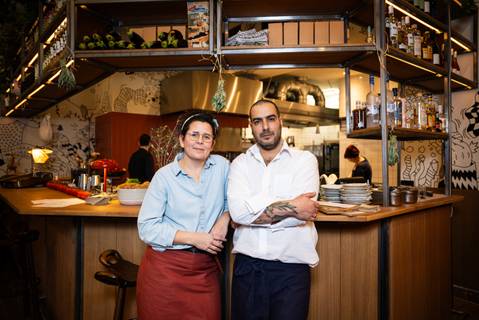There is a place in the sleepy, shaded, homely world of Pasarét in residential Buda, the name of which crops up in hushed tones when talking about gastronomy in Budapest: the Gyergyó Kisvendéglő. A family-run Hungarian restaurant in the classic sense, its reputation is so widespread that we had to find out whether it was the food or just nostalgia. Spoiler alert: it’s brilliant!
The concept of a garden restaurant in Buda is usually associated with the great novelist and gourmand Krúdy. At the turn of the century, the whole Buda side was full of legendary outdoor venues, where guests were received with simple food, cold beer and kind service. Many have since tried to piggyback on this heritage, with differing measures of success, but upon entering Gyergyó, it seems that they take this beautiful if disappearing tradition seriously.
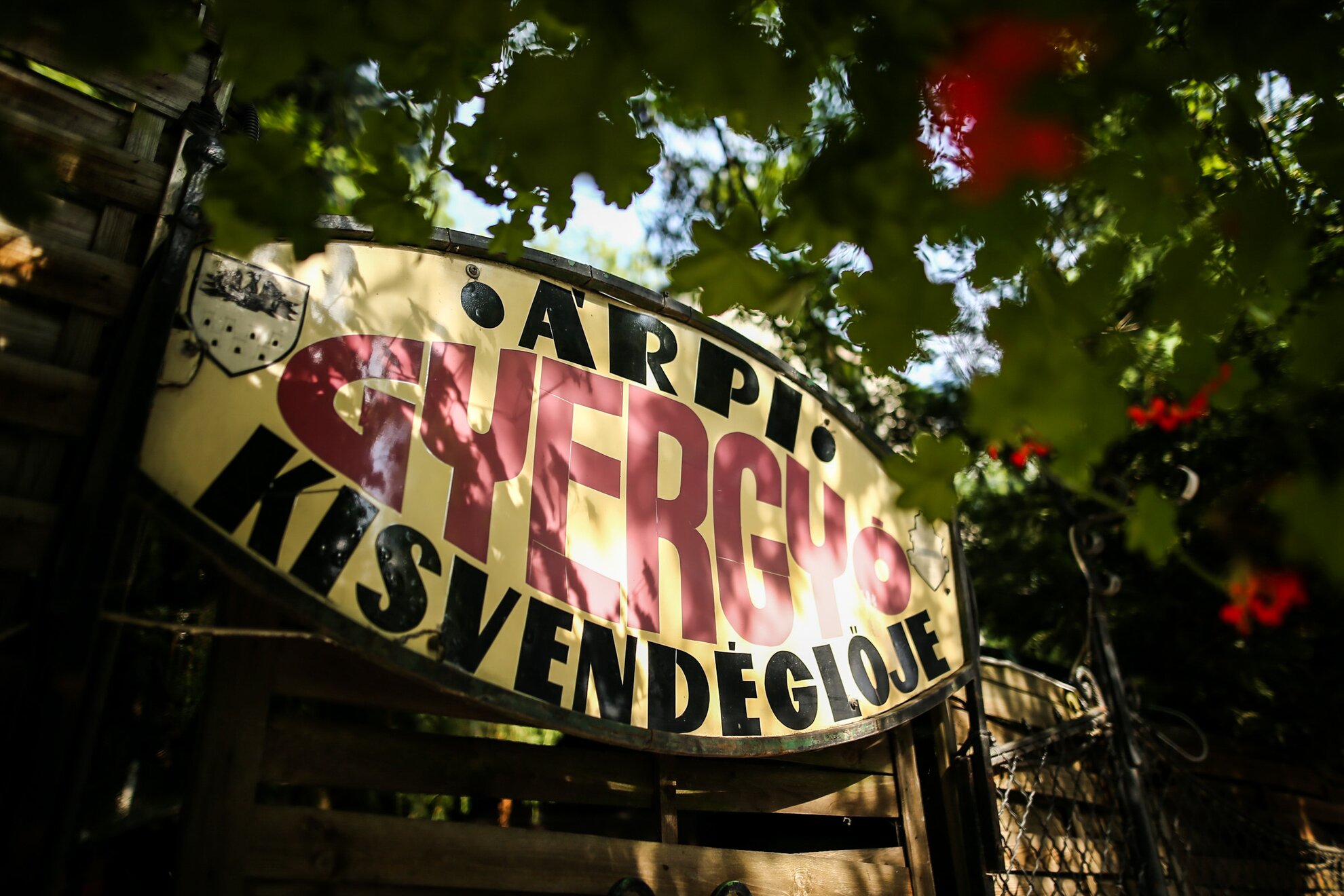
A family-style restaurant, as they categorise themselves, not only means that you can bring grandma, the young ones and an auntie or two, but that a family really does everything from cooking to serving to administration — over the course of almost 30 years – and treats the guest like one of the clan.
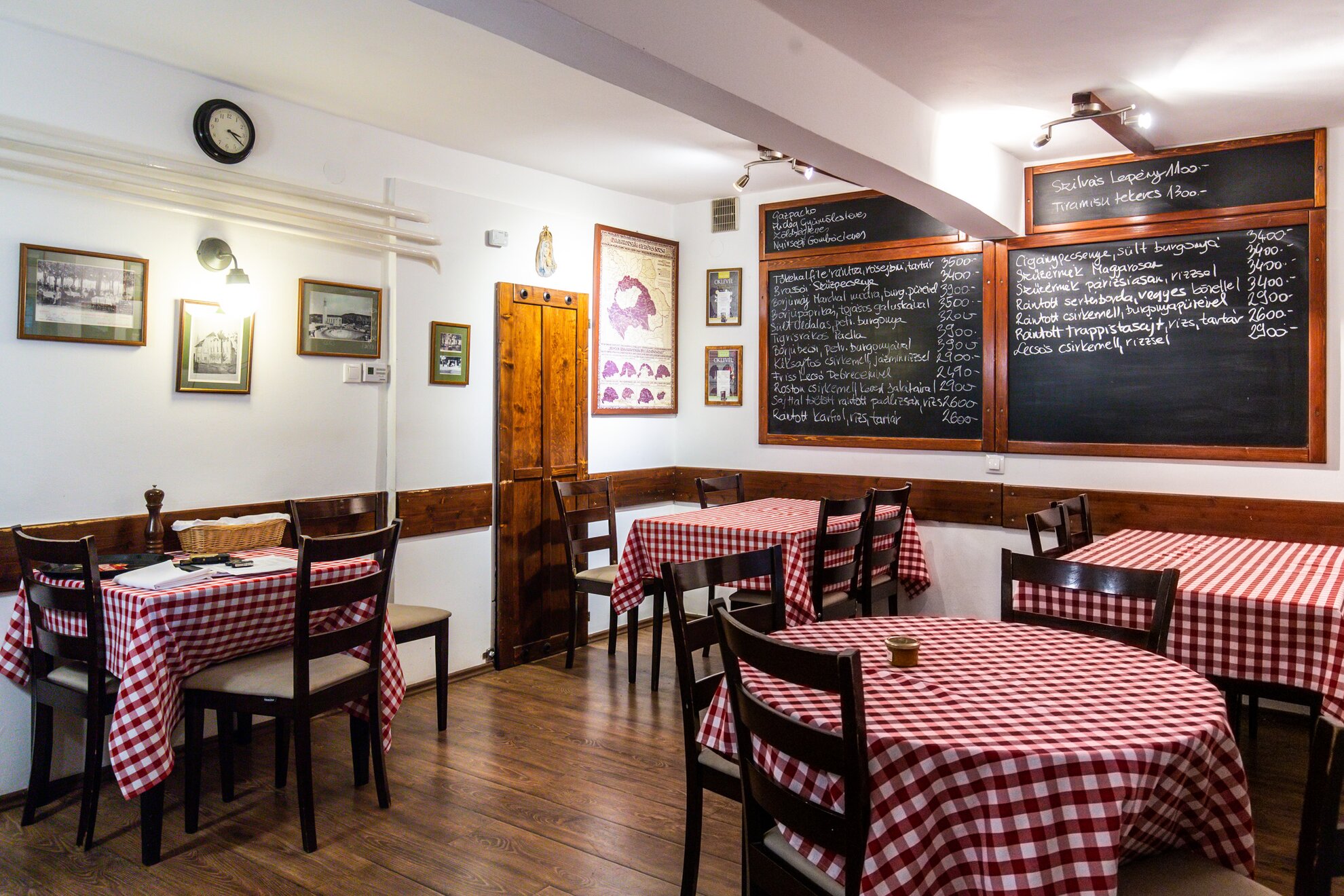
The history of Gyergyó began in the Socialist era – in fact, even before that, when Árpád Gyurka and his parents arrived in Hungary from Gyergyószentmiklós in 1944, fleeing Soviet troops. Árpád later became a wrestler, but he also learned the craft of cooking, turning to kitchens such as Apostolok, Európa or Astoria over the years.
Eventually the place he did stamp with a name close to his own was the Gyergyó Presszó in the centre of Pasarét.
A popular place of its time, it functioned as a solid old-school café by day, while in the evening, music awaited regulars. The business was not theirs, so when it had to be returned during nationalisation under Communism, Árpád had a brainwave and opened the Gyergyó Kisvendéglő, with two tables from his own house, in a space once used as the garage.
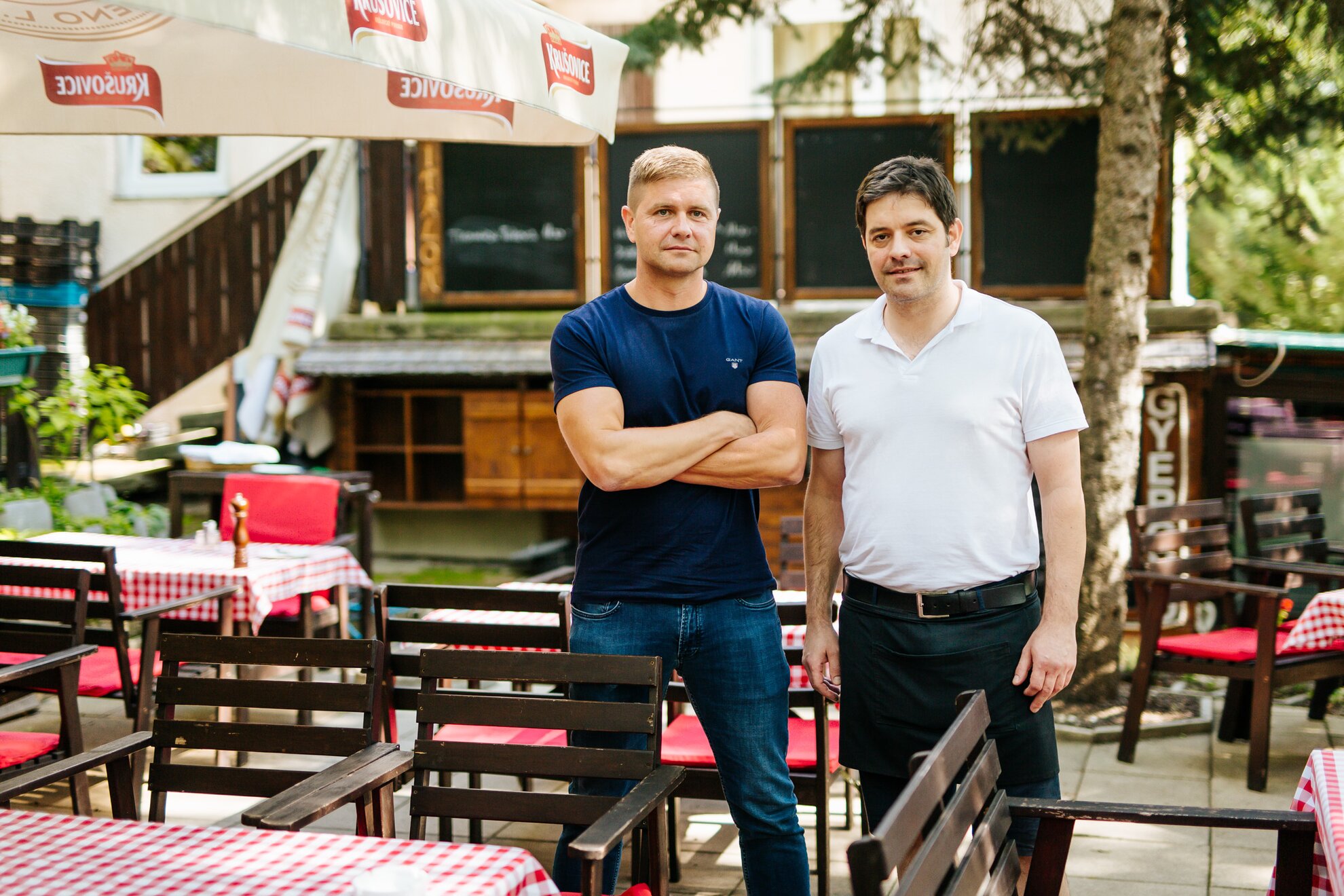
Regulars soon got used to Gyergyó, which was more of a diner at the time, so much so that it soon had to expand. Not only the space and number of tables, but also the service staff. Árpád's two sons, Árpi and Gergő, also joined Gyergyó. The concept of a family-run restaurant is now set in stone, and one appreciated by visitors – and not just regulars.
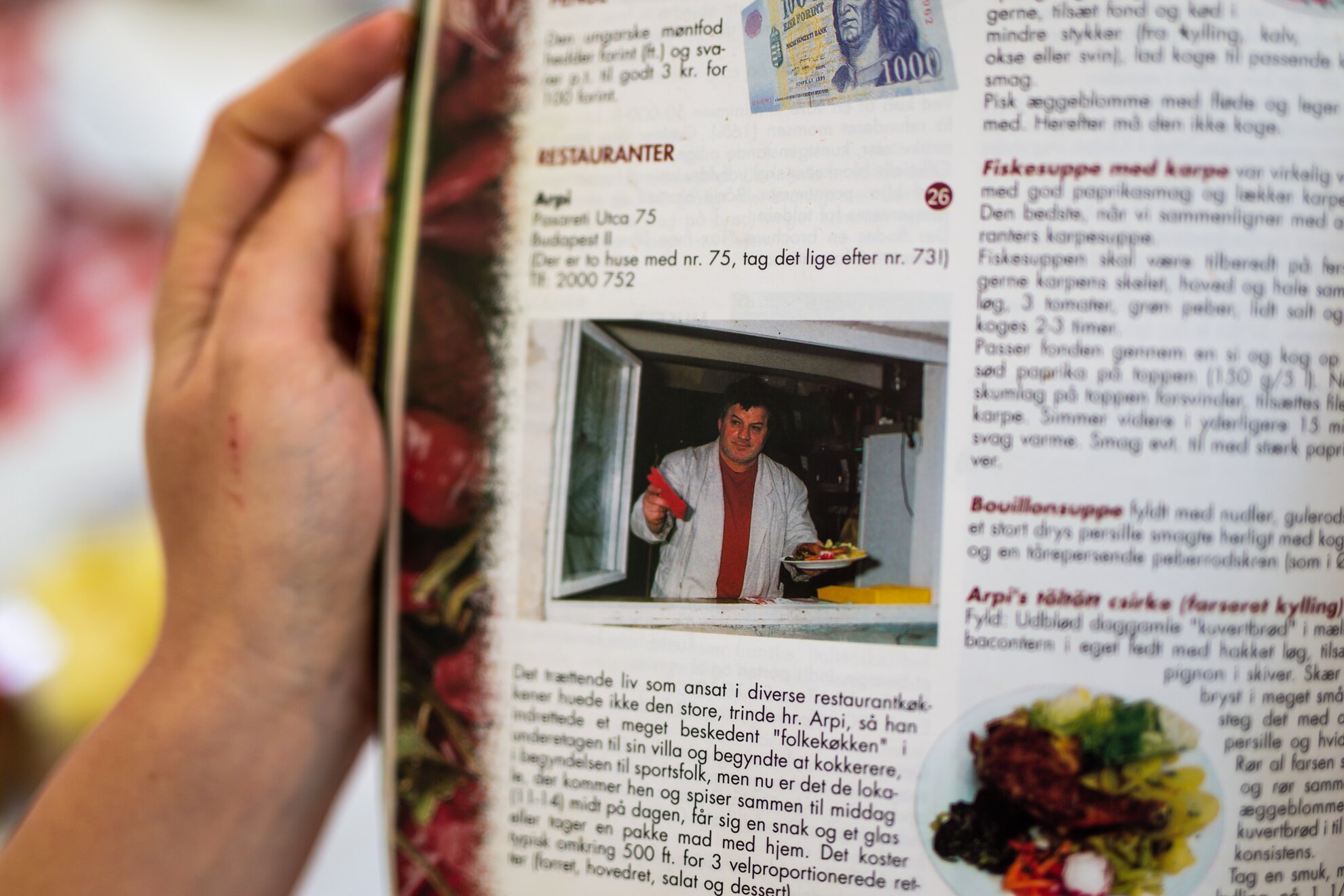
There are many who come over from Pest to have lunch here. Illustrious returnees include artists, writers, actors, Pest lawyers, politicians and bankers. When still starring in films or writing books Dezső Garas and writer Tamás Ungvári would eat here every day, while rock singer Charlie, actor Géza Tordy, TV personality István Szellő, and actresses Ági Gubik and Éva Almási still do. No few foreign magazines and newspapers – including the Chicago Herald Tribune – also recommend the place to sample Hungarian hospitality.
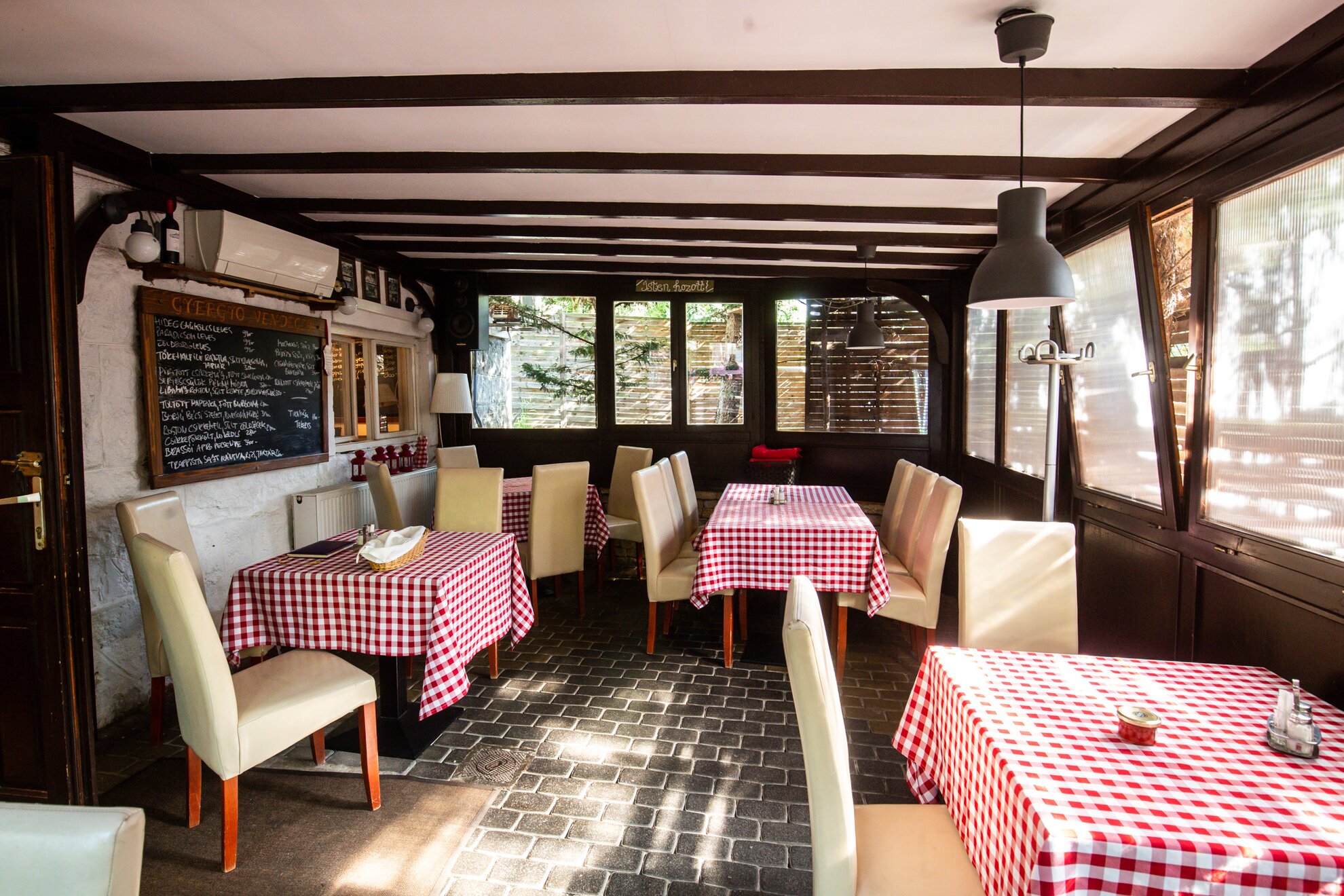
Founder Árpád Gyurka is still in the kitchen. With the help of two Transcarpathian chefs, he prepares the dishes that change on a daily basis. The daily shop is carried out by Árpi, starting every morning at Fény utca market, and only his fresh, seasonal finds make the menu. So far, so fancy downtown bistro, but you certainly don’t find Asian spices, Scandinavian fusion or any kind of reinvention at the Gyergyó Kisvendéglő.
One of the secrets of its popularity is that they take run a kitchen with few other examples in Hungary, let alone Budapest, expertly preparing flawless Socialist-era dishes based on fresh ingredients and well-developed recipes. Pho soup and Neapolitan pizzas are all well and good, but sometimes you just need a flawless stuffed pepper, spinach pottage or a Gypsy roast.
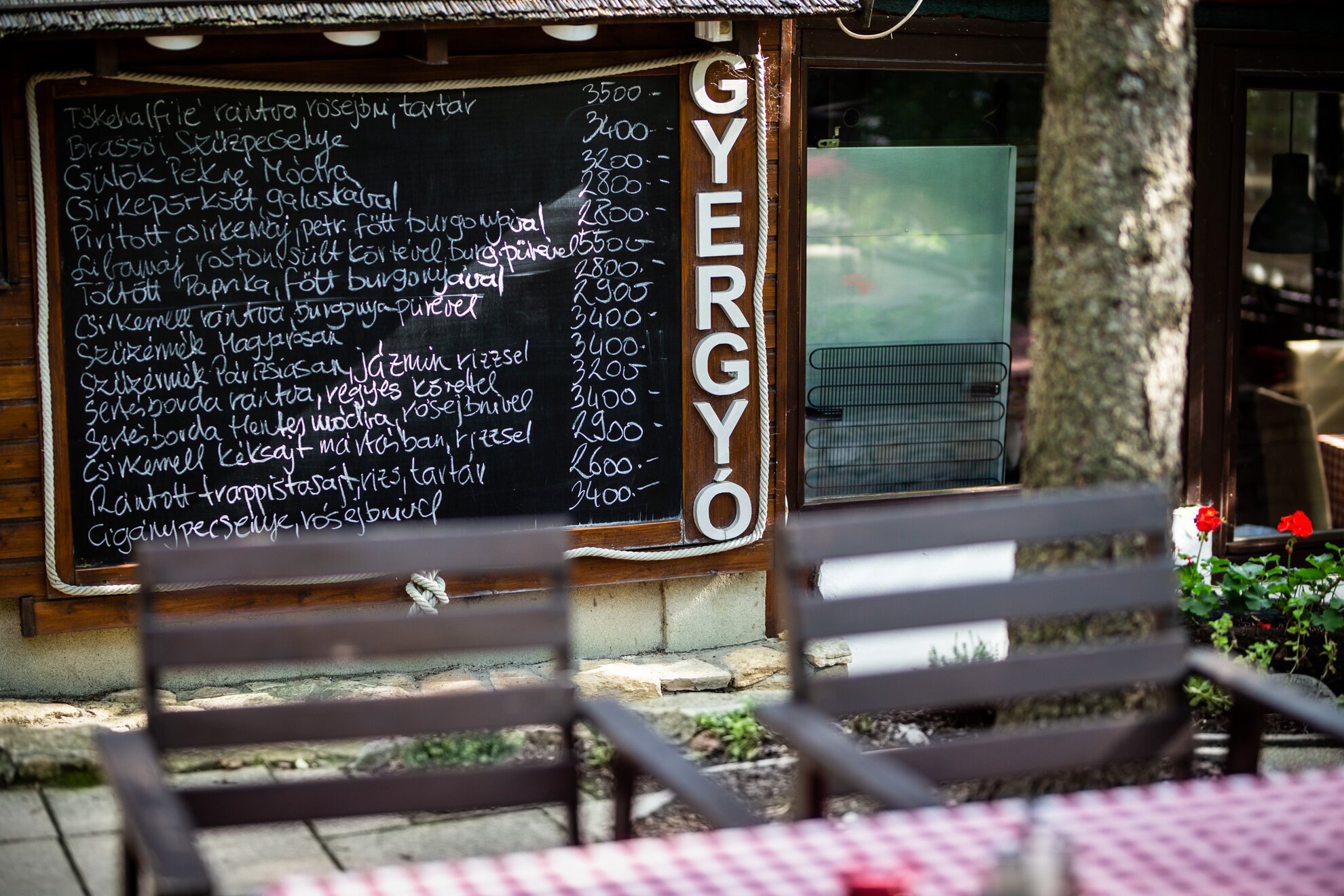
Modernisation does occur, however — occasionally, dishes such as paella are included — but only if the recipe comes from a reliable, authentic source. There are constants on the menu, with options that vary daily. Pre-ordering is common: if someone has a quiet word with Árpi or Gergő as they zigzag between tables that grated liver might be nice one day, it’ll probably be chalked up on the board in a day or two.
Home delivery during quarantine was nothing new here, either. At any time, one of the regulars might not be able to make it over during opening hours, fairly limited in any case, or falls ill, then he will be taken his lunch that day.
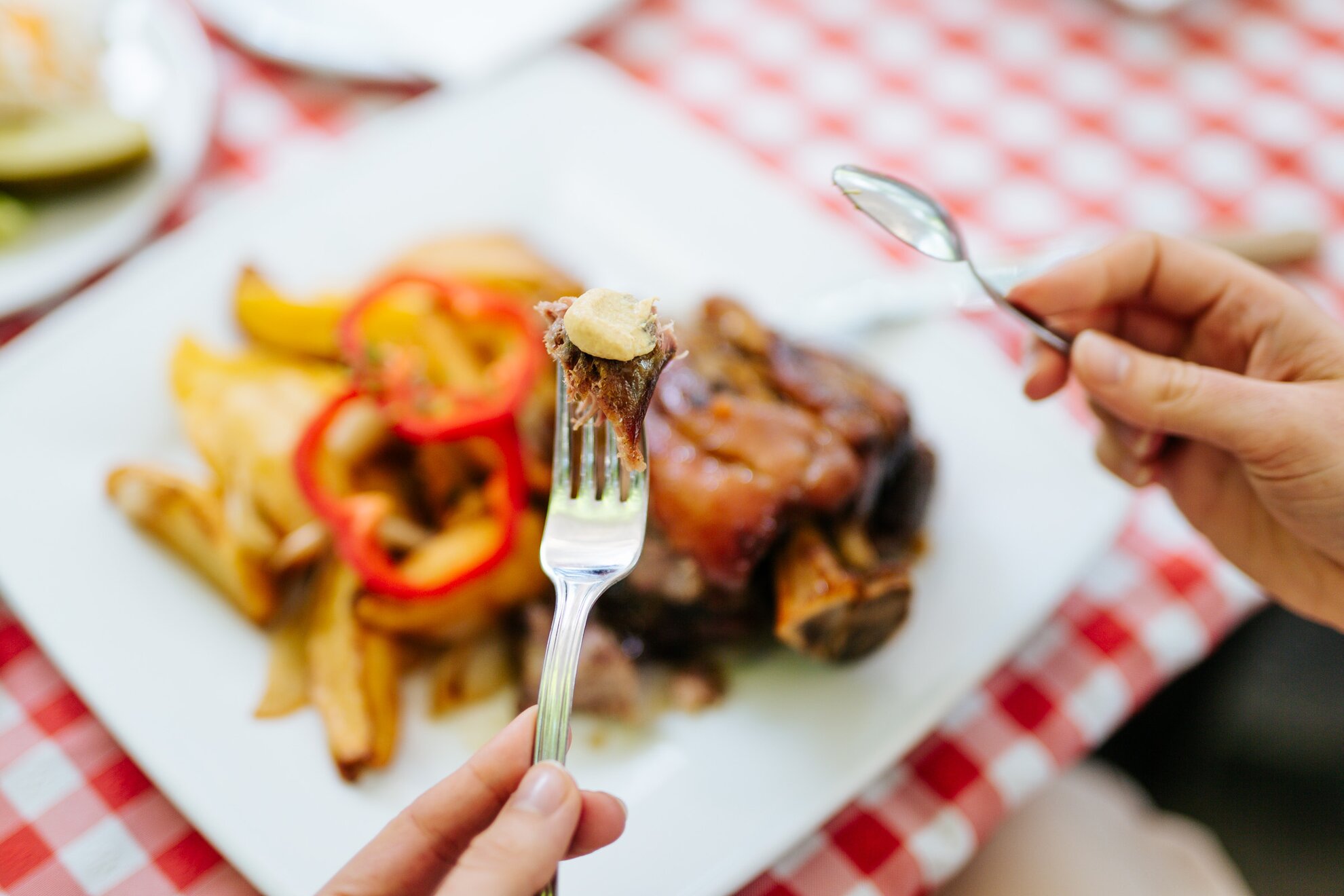
À propos those operating hours, 11am-3.30pm – according to Árpi, they tried to open all day a few years ago, but it wasn’t working out. Since he has his own restaurant, Stübli in Nagykovácsi – where, in addition to classic Hungarian dishes you find in Gyergyó, they also prepare Swabian food – any changes would be tricky. Similarly, stews may run out and Friday’s beef soup, so if that’s what you’re after, come here early.
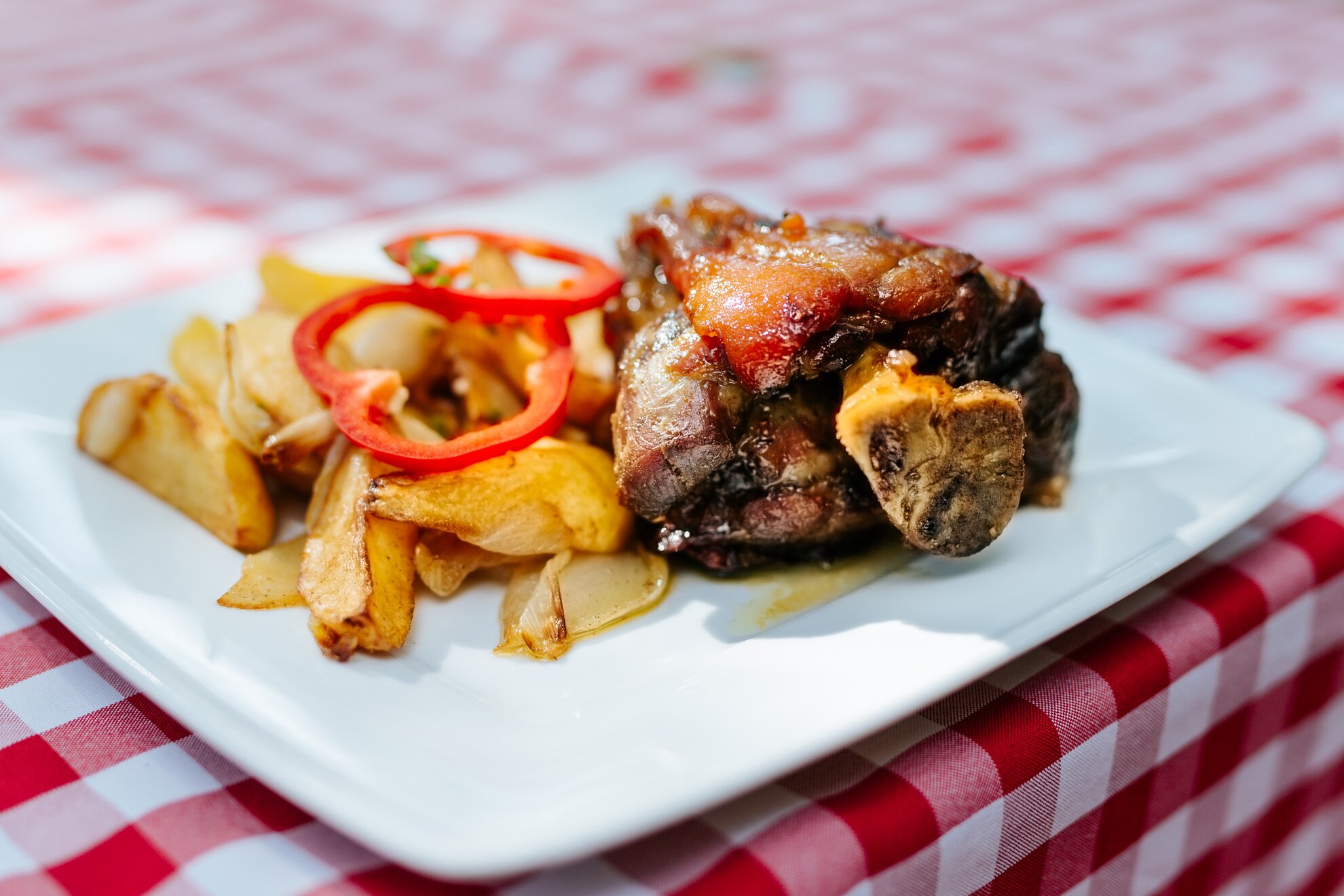
Other favourites here include Brassói grill (3,400 HUF), made in the classic, simple way, with pork, hot crispy diced potatoes and a tad of garlic and arrives at the table in juicy fashion, accompanied by a plate of homemade pickles. The other constant dish most associated with Gyergyó, is pork knuckle pékné-style (3,200 HUF), on the bone with soft, juicy meat, skin nicely fried red, plenty of onion and potatoes, a hulking great portion with mustard. If you can’t finish it first time, they’ll wrap it for you and it’ll be almost as great heated up for dinner.
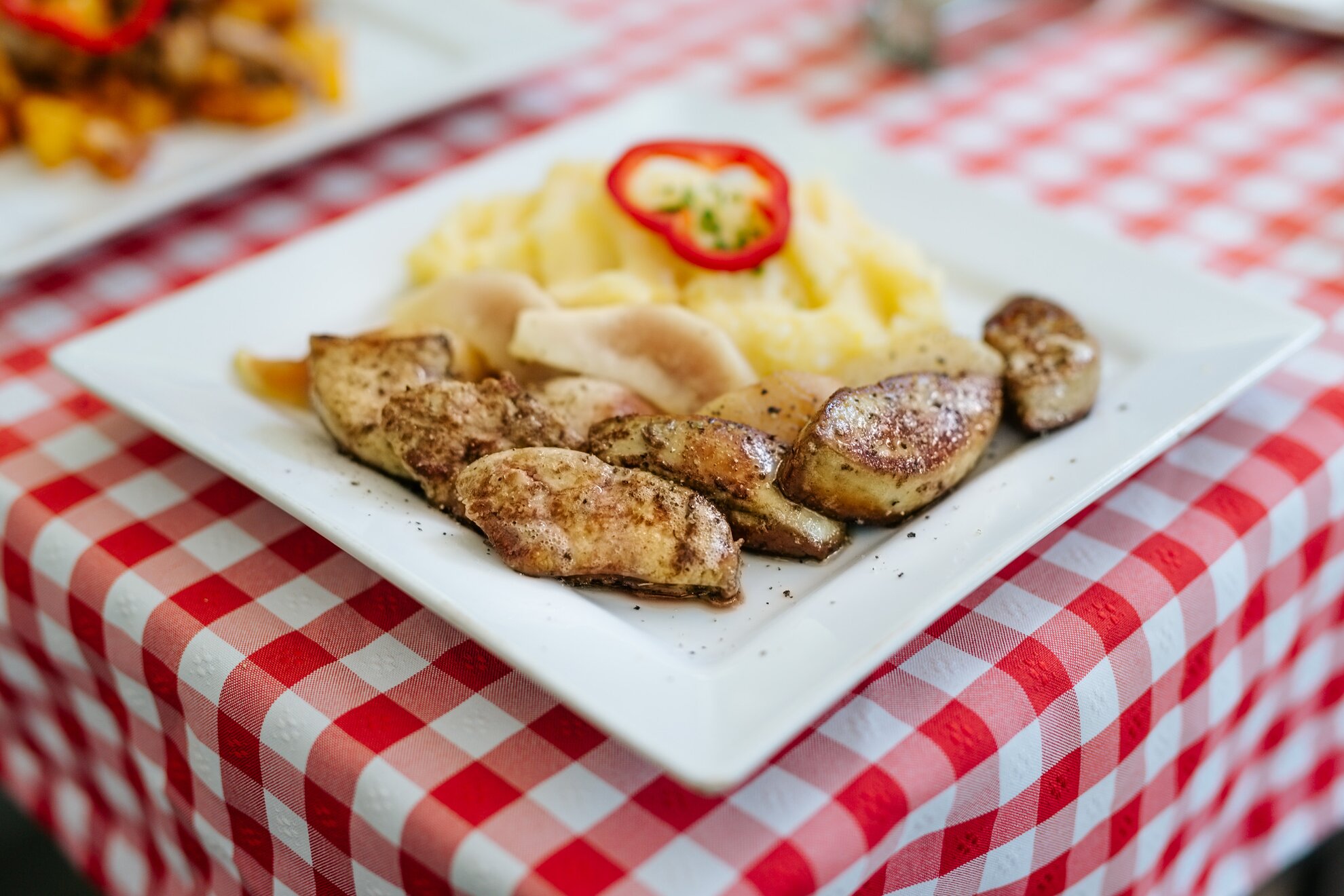
Grilled goose liver (5,500 HUF) is not always on the menu, and obviously not the cheapest, but feels homely, with real mashed potatoes and grilled pear slices reminiscent of compote. If this all you sample, you’ll get a real idea why Gyergyó is so revered – they are unbeatable in completely simple, fuss-free, honest homemade flavours.
They don’t need a sous-vide tub or bottles of ponzu sauce, and even pretty little dots of parsley oil don’t garnish the plate – you receive food of the type served at a million lunchtimes across Hungary, with humility and respect for the guest, who’s probably working out when their next visit might be.
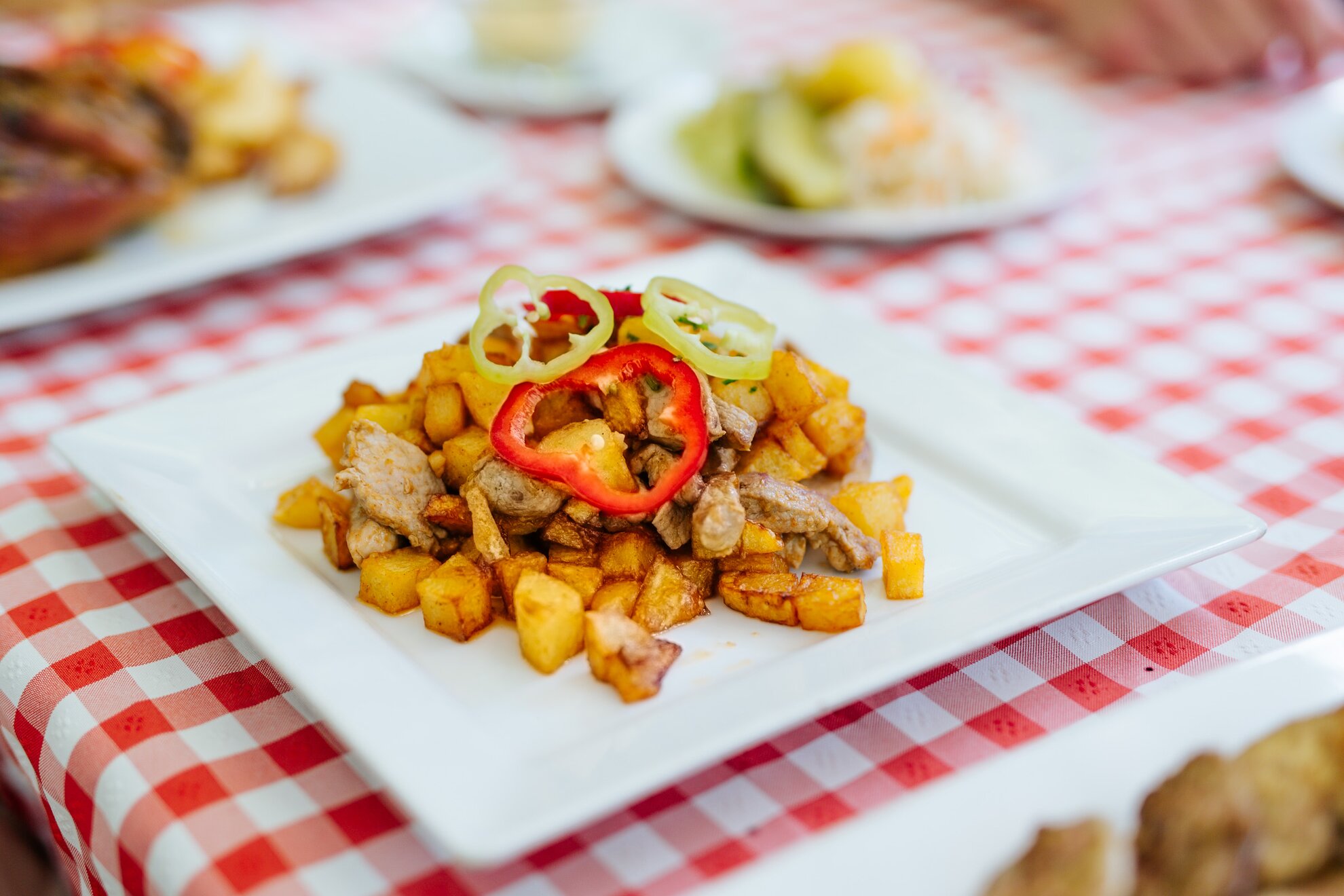
Faults? Well, those opening hours, and prices are a little high for this kind of domestic cuisine. At the same time, you’ll get a well-crafted dish, made from fresh ingredients and the kind of attention lacking in so many other places. Plus there’ll always be something new to try on your next visit.
